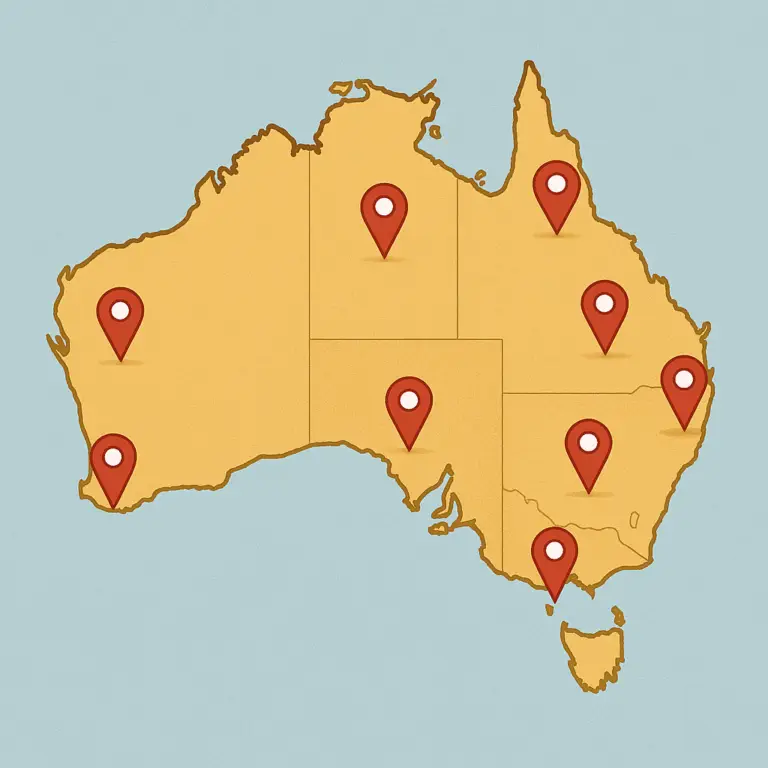Current Solar and Battery Rebates State by State

Ready to get 3 quotes?
🔋New South Wales (NSW)
1. Battery Installation Discount
Program: NSW Battery Incentive
Benefit: Discounts on battery installations, with larger batteries receiving larger discounts.
Eligibility: Homeowners or small businesses with existing or new solar systems.
Details: The discount is applied through accredited installers and is based on the usable capacity of the battery. Energy.gov.au
2. Virtual Power Plant (VPP) Incentive
Program: NSW Peak Demand Reduction Scheme
Benefit: Incentives ranging from $120 to $400 for connecting your battery to a VPP.
Eligibility: Homes with solar and battery systems.
Details: Incentives are based on battery capacity and are provided through accredited suppliers. NSW Climate and Energy
3. Smart Distributed Batteries Project
Program: NSW Government-funded VPP
Benefit: $4,950 discount on a Tesla Powerwall 2.
Eligibility: Residents in specific council areas participating in the VPP initiative.
Details: This project aims to develop a 6MW VPP and encourages battery installation by offering discounts for joining the VPP. Solar Victoria+21Energy.gov.au
🔋 Victoria (VIC)
1. Solar Battery Loan
Program: Solar Victoria – Solar Homes Program
Benefit: Interest-free loans up to $8,800 for battery installation.
Eligibility: Owner-occupiers with a solar system of at least 5kW, among other criteria.
Details: Loans are repaid over four years, reducing the upfront cost of battery systems. Solar Victoria
2. Solar Panel (PV) Rebate
Program: Solar Victoria – Solar Homes Program
Benefit: Rebates up to $1,400 for solar panel installations.
Eligibility: Victorian households meeting specific criteria.
Details: The rebate is paid directly to the retailer and deducted from the invoice. Solar Victoria
🔋 Queensland (QLD)
As of now, Queensland does not have a specific state-wide solar battery rebate program. However, residents can still take advantage of solar battery incentives through the Federal Government’s schemes and the Small-scale Renewable Energy Scheme (SRES).
 Federal Government
Federal Government
1. Small-scale Renewable Energy Scheme (SRES)
Benefit: Reduces the cost of installing solar systems through Small-scale Technology Certificates (STCs).
Eligibility: Households and small businesses installing eligible renewable energy systems.
Details: STCs are typically applied as an upfront discount by your installer. NSW Climate and Energy Action
2. Upcoming Household Battery Subsidy
Announcement: In April 2025, the Federal Government pledged $2.3 billion to reduce household battery costs by up to 30%.
What Is the Value of the 2025 Solar Battery Rebate?
For example, a 10 kWh home battery would qualify for a maximum rebate of $3,720 in 2025. After deductions, the out-of-pocket savings are expected to be about $3,300. To get a personalised estimate of your potential savings, you can use the Federal Government’s Solar Battery Rebate Calculator.
Importantly, this federal rebate is expected to stack with state-level incentives, meaning homeowners may be able to benefit from both. However, eligibility and application processes may vary, so it’s important to check for any complexities or conditions.
What Batteries Will Qualify?
To be eligible for the rebate, battery systems must meet certain criteria:Clean Energy Council approval is required for all battery products, and installations must be completed by accredited professionals.
The minimum eligible system size is expected to be 5 kWh of usable capacity.
The maximum subsidised capacity is likely to be capped at 50 kWh, although systems up to 100 kWh may still qualify for the rebate on the first 50 kWh.
Batteries must be VPP-capable (Virtual Power Plant), but participation in a VPP is not mandatory.
In 2025, homeowners can expect to receive a federal rebate of up to $372 per kilowatt-hour (kWh) of usable battery capacity. However, after accounting for administrative costs and processing fees, the real-world discount will likely amount to around $330 per usable kWh. Similar to the solar panel rebate, this incentive will gradually decrease each year and is scheduled to phase out completely by 2030.

 Federal Government
Federal Government